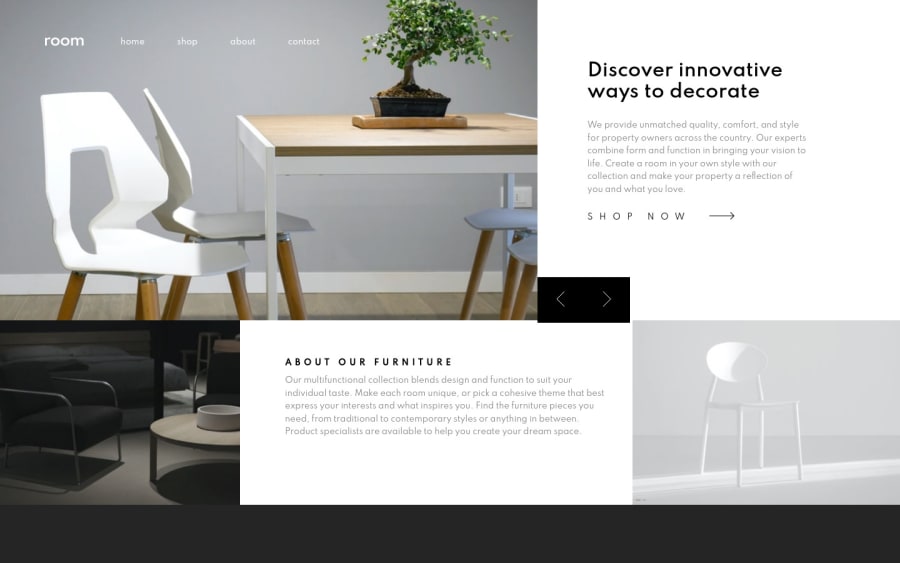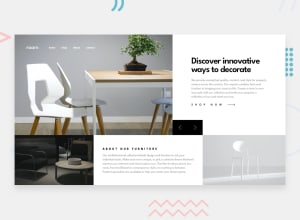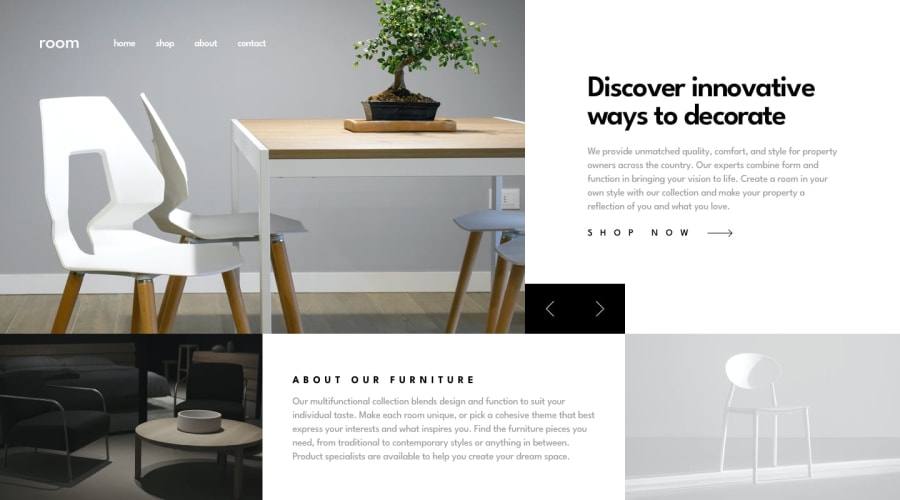
Design comparison
SolutionDesign
Solution retrospective
In this challenge, I have made some layout/design decisions that I believe have improved the responsive flow a bit.
I have had an issue with a 'side-effect' while implementing fade-in animation on this project, which I described in detail in the README file on my repository link.
Although I have come up with a different solution eventually, I'd appreciate if someone could tell me what specifically could have caused the said side-effect and whether I could have refactored my code to resolve it without adding the extra CSS.
Thanks in advance!
Community feedback
Please log in to post a comment
Log in with GitHubJoin our Discord community
Join thousands of Frontend Mentor community members taking the challenges, sharing resources, helping each other, and chatting about all things front-end!
Join our Discord
